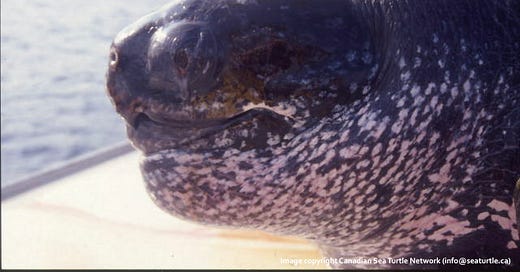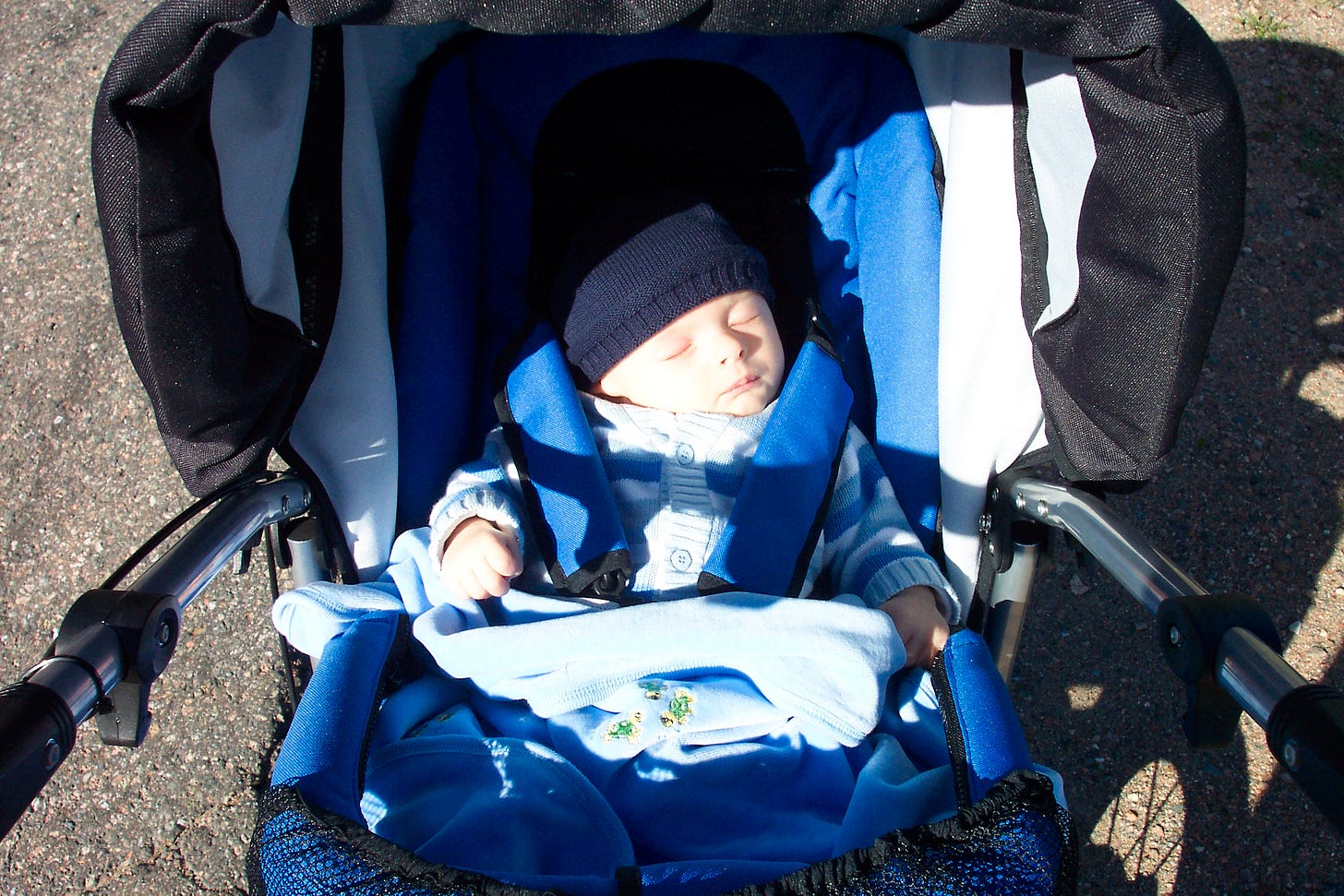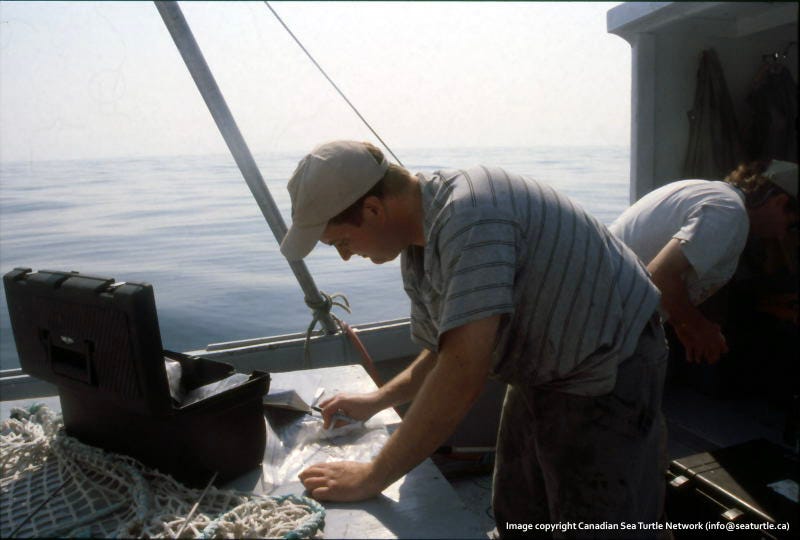CAN 115!
Our first child arrived at the start of the sea turtle field season in 2003. It was the first summer I didn’t spend on the field boat, which was a tough adjustment for me. I didn’t want to leave the baby. I didn’t want to miss the excitement of the boat and of seeing the turtles.
I would often wander down to the wharf, my son bundled up against the cool early mornings, to see the field team off, wondering what the news would be at the end of the day. (Back then we had flip phones and pretty spotty cell coverage; the day’s stories waited until the boat was tied up again.)
On August 27 of that year, the team found a turtle that had been previously PIT tagged. She had no flipper tags, so they added CAN tags and then a satellite transmitter. At that time, we had only ever found a handful of turtles that had been marked by other researchers, so this animal was particularly intriguing. We named her “Jillian” after the daughter of one of our captains.
We learned weeks later that Jillian had first been seen on May 2, 2000, nesting in Trinidad. At that time, the length of her carapace (her top shell) was 161 cm. She was a big turtle and so likely had been nesting undetected by scientists for many years already.
She was seen nesting again in 2006.
And then again last week.
My little baby is now over six feet tall and finishing up his first year of university at McGill. And Jillian is still nesting—a remarkable 22 years after she was first found.
Mike couldn’t believe it when he got the call from Ganesh, who is in charge of monitoring the beach at Fishing Pond in Trinidad. They identified Jillian by her remaining flipper tag: CAN115. Mike is working with the team at Fishing Pond and the Nature Seekers in hopes that they will find Jillian when she returns to lay her next nest—and maybe even satellite tag her.
We don’t know a lot of simple facts about leatherbacks. One of these persistent mysteries is the reproductive lifespan of a female leatherback—for how many years will she keep nesting? It’s an important number—particularly when you are trying to study an endangered species.
Jillian—nesting for more than two decades! What a thrilling bit of hope.






